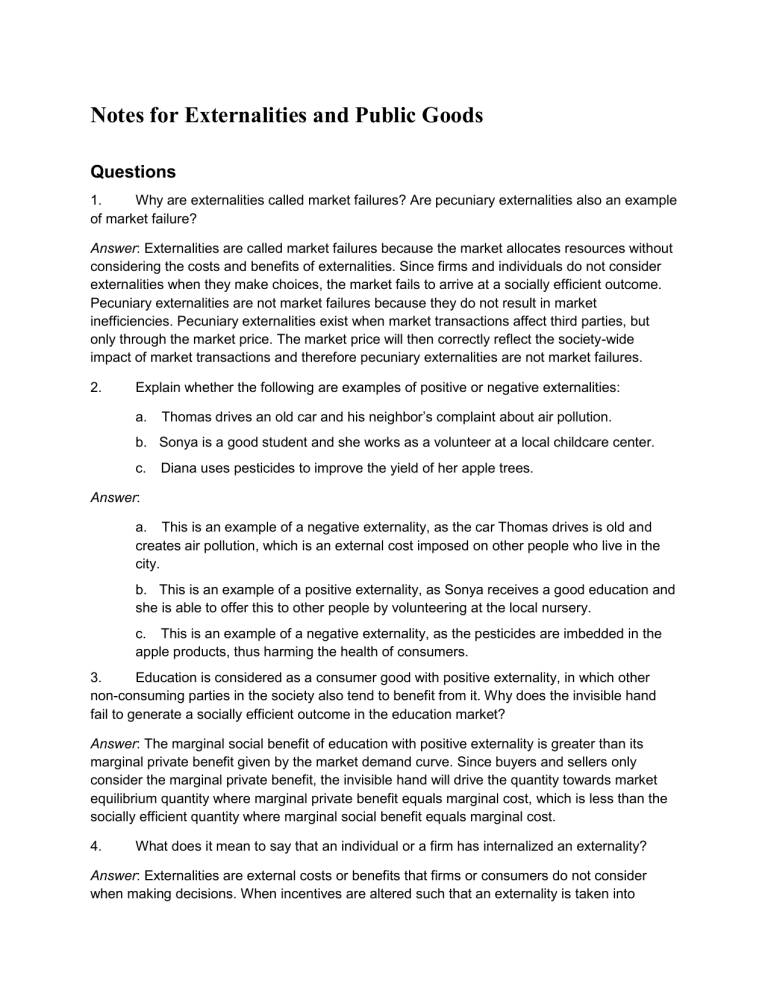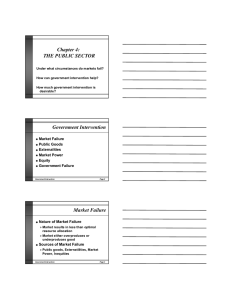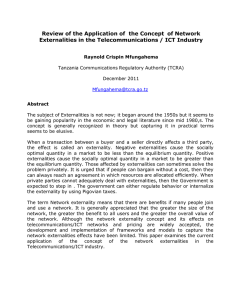
Notes for Externalities and Public Goods Questions 1. Why are externalities called market failures? Are pecuniary externalities also an example of market failure? Answer: Externalities are called market failures because the market allocates resources without considering the costs and benefits of externalities. Since firms and individuals do not consider externalities when they make choices, the market fails to arrive at a socially efficient outcome. Pecuniary externalities are not market failures because they do not result in market inefficiencies. Pecuniary externalities exist when market transactions affect third parties, but only through the market price. The market price will then correctly reflect the society-wide impact of market transactions and therefore pecuniary externalities are not market failures. 2. Explain whether the following are examples of positive or negative externalities: a. Thomas drives an old car and his neighbor’s complaint about air pollution. b. Sonya is a good student and she works as a volunteer at a local childcare center. c. Diana uses pesticides to improve the yield of her apple trees. Answer: a. This is an example of a negative externality, as the car Thomas drives is old and creates air pollution, which is an external cost imposed on other people who live in the city. b. This is an example of a positive externality, as Sonya receives a good education and she is able to offer this to other people by volunteering at the local nursery. c. This is an example of a negative externality, as the pesticides are imbedded in the apple products, thus harming the health of consumers. 3. Education is considered as a consumer good with positive externality, in which other non-consuming parties in the society also tend to benefit from it. Why does the invisible hand fail to generate a socially efficient outcome in the education market? Answer: The marginal social benefit of education with positive externality is greater than its marginal private benefit given by the market demand curve. Since buyers and sellers only consider the marginal private benefit, the invisible hand will drive the quantity towards market equilibrium quantity where marginal private benefit equals marginal cost, which is less than the socially efficient quantity where marginal social benefit equals marginal cost. 4. What does it mean to say that an individual or a firm has internalized an externality? Answer: Externalities are external costs or benefits that firms or consumers do not consider when making decisions. When incentives are altered such that an externality is taken into account, firms and individuals are said to have internalized the externality. So, for example, suppose I raise bees next door to your apple orchard. The bees pollinate your trees and so there is an externality. The externality will be internalized if I buy your orchard.






